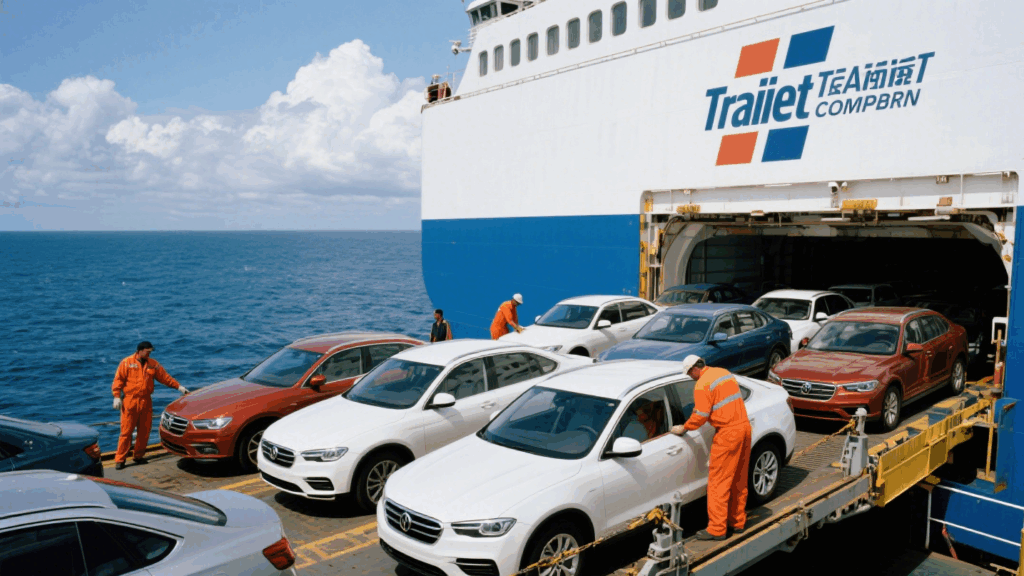In today’s interconnected market, worldwide car transport is essential for individuals, dealerships, and businesses that need to move vehicles across continents. Whether you’re relocating abroad, purchasing a rare model, or supplying fleets internationally, choosing the right shipping method ensures your car arrives safely, on time, and at the right cost.
1. Understanding Worldwide Car Transport
Worldwide car transport refers to the logistics service of moving vehicles between countries or continents by sea, air, or land. It involves specialized carriers, strict customs procedures, and protective handling to maintain the vehicle’s condition throughout the journey.
Key service types include:
- RoRo (Roll-on/Roll-off): For operational vehicles, driven on and off the vessel.
- Container Shipping: For high-value or classic cars, offering full enclosure.
- Air Freight: For urgent or high-end shipments.
2. Popular Routes & Global Coverage
Worldwide car transport connects every continent, but demand is concentrated on a few high-volume corridors. Understanding the most common routes helps you plan for costs, transit time, and customs procedures.
High-Demand Intercontinental Routes
- Asia → North America – Driven by exports from Japan, China, and South Korea to the USA and Canada.
- Europe → Australia & New Zealand – Popular for prestige and vintage vehicles.
- Middle East → Africa – Often commercial fleets and 4×4 vehicles.
- Intra-Europe & Intra-Asia – For trade, relocations, and seasonal vehicle transfers.
🟢 Strategic Port Hubs
- Shanghai, China – Asia’s busiest car export hub.
- Hamburg, Germany – European gateway for both luxury and standard vehicles.
- Los Angeles, USA – Key entry point for Asian and Pacific routes.
- Dubai, UAE – A re-export hub connecting Europe, Asia, and Africa.
📌Tip: Choosing the right port pairing can cut transit time by 15–20%.
3. Shipping Time, Conditions & Terms
| Route Example | Transit Time (Days) | Common Terms | Conditions |
|---|---|---|---|
| China → USA (West Coast) | 18–25 days | CIF / FOB | Weather delays possible |
| Japan → UK | 28–35 days | CFR / DAP | Customs inspection required |
| Germany → UAE | 14–20 days | FOB / EXW | Temperature-controlled options |
| USA → Australia | 22–30 days | CIF / DDU | Biosecurity inspection mandatory |
| Italy → South Africa | 20–27 days | CFR / DAP | Secure tie-downs included |

4. Shipping Methods Explained
When booking worldwide car transport, selecting the right shipping method is as important as choosing the carrier. Each method serves different needs:
- Best for operational vehicles.
- Cars are driven directly onto the ship’s deck.
- Pros: Cost-effective, fast loading/unloading.
- Cons: Limited protection from elements.
- Car is placed inside a secure container (20ft or 40ft).
- Pros: Maximum security, ideal for high-value or classic cars.
- Cons: Higher cost, longer preparation.
3️⃣ Air Freight
- Premium service for urgent deliveries or luxury vehicles.
- Pros: Fastest option (1–5 days).
- Cons: Significantly higher price.
4️⃣ Land Transport (Supplementary)
- Used for inland pickup or delivery to/from ports.
5. Cost Factors for Worldwide Car Transport
The price for worldwide car transport can vary widely. Below are the major elements affecting the final bill:
📍 Route Distance & Frequency
- Busy trade routes are generally cheaper.
- Remote destinations require special arrangements.
- RoRo is cheapest, air freight most expensive, container shipping in between.
📍Vehicle Size & Weight
- Oversized SUVs, trucks, or modified vehicles increase costs.
📍Customs Duties & Taxes
- Import duties, VAT, and local handling fees apply depending on destination.
📍 Insurance Coverage
- Optional but highly recommended; rates depend on vehicle value.
6. Customs Clearance & Documentation
Proper paperwork ensures smooth entry and avoids delays. Common requirements include:
Required Documents
- Bill of Lading (B/L) – Proof of shipment.
- Commercial Invoice – Declares vehicle value.
- Export/Import Permits – Issued by authorities.
- Proof of Ownership – Registration or title document.
- Customs Declaration Forms – Completed for both origin and destination.
Additional Considerations
- Some countries require vehicle compliance checks before release.
- Biosecurity inspections may apply (especially in Australia & New Zealand).
- Incorrect paperwork can lead to storage fees or seizure.

7. Tips for Safe & Hassle-Free Shipping
✅Document Your Vehicle – Photograph from all angles and note existing scratches.
✅Remove Personal Items – Prevents inspection delays and reduces theft risk.
✅Check Fuel Requirements – Most carriers require near-empty tanks for container shipping.
✅Choose the Right Insurance – Covers damage, theft, and total loss.
✅Use a Reputable Forwarder – Experienced agents handle customs and prevent costly mistakes.
✅Plan for Seasonal Delays – Holidays or peak seasons can extend shipping times.
8.Conclusion
Worldwide car transport connects markets, customers, and collectors globally. By selecting the right method, preparing documents, and working with experienced freight forwarders, you ensure a smooth and cost-efficient vehicle shipment in 2025.
Request a Quote
Need a tailored solution for your shipping from China?
Let TJ China Freight Forwarder assist you with reliable, cost-effective service.
FAQ:
Q1.Can I ship a non-running vehicle internationally?
Yes, but it usually requires container shipping or specialized loading equipment.
Q2.How early should I book worldwide car transport?
Ideally, 3–6 weeks before your planned shipment date.
Q3.Can I ship multiple cars in one container?
Yes, depending on vehicle sizes—common for dealerships or bulk buyers.
Q4.Do I need to empty my fuel tank before shipping?
For RoRo, a small amount (about 1/4 tank) is typically allowed; containers often require near-empty tanks.
Q5.Will my car be driven during the shipping process?
Only for loading/unloading in RoRo; not for container shipments.
